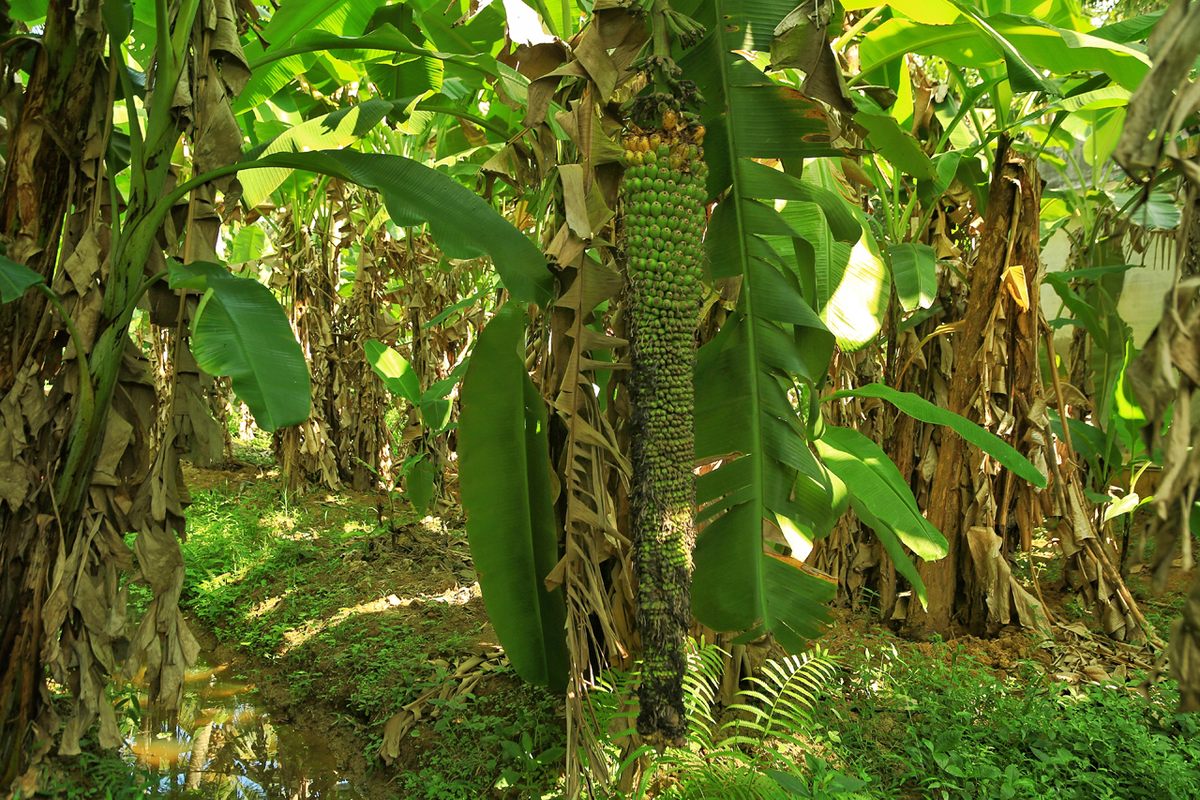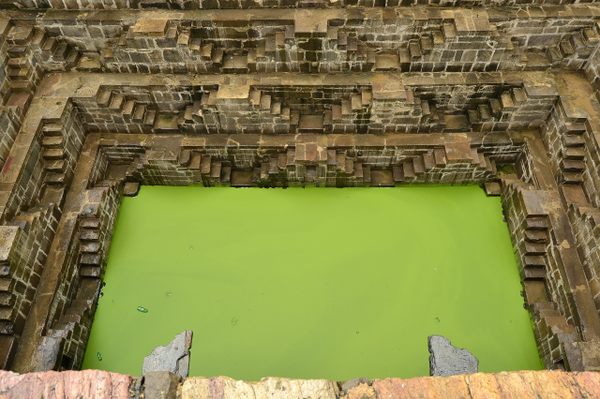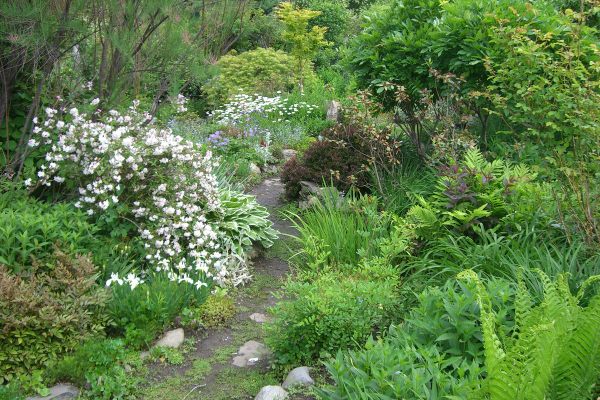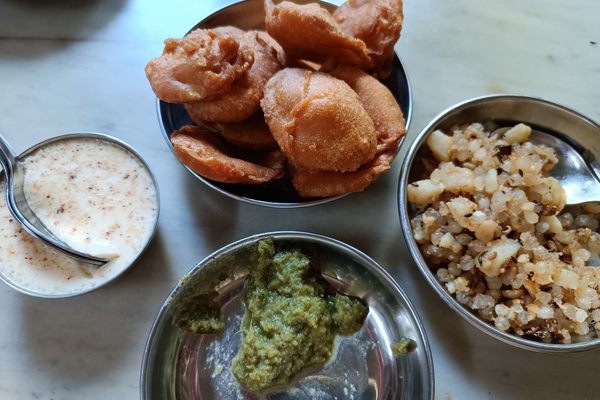

At This Banana Farm, the Bunches Grow in 430 Shapes and Sizes
India’s “plantain man” has traveled widely to build a collection of unusual varieties.
In his backyard in Kerala, India, Vinod Sahadevan Nair, 60, grows bananas and plantains and rears chickens and ducks. Situated as it is in an agrarian region, abutting the biodiverse Western Ghats, his farm may seem typical. But a walk through his four acres reveals bananas growing in every conceivable shape, size, and hue: from deep red to turquoise blue. An avid farmer since the age of 12, Vinod has conscientiously collected some 430 varieties of banana over the past 30 years.
Vinod’s farming practices were not always so quixotic. As a youngster, he pitched in and spent weekends helping his father tend their coconuts and the 10 to 11 banana varieties that they grew. This was typical for the area—unlike in banana-importing countries, where people know only the Cavendish banana, Indian markets generally sell at least a dozen different types. A bright student, Vinod graduated college with a degree in physics and picked up a web-designer job in Kochi, 150 miles north of his village, Parassala. Still, on weekends, he returned to visit his family and help on the farm.

In 2012, Vinod approached one of the agricultural institutes in his home state to procure a few native suckers (shoots arising from a banana tree’s roots, which are used for replanting). But a staff member turned him away and refused to answer his questions. This spurred Vinod to seek banana knowledge on his own. He skimmed the internet, wrote letters and emails to other agricultural institutes in India, and traveled great lengths of the country to procure exotic varieties. A banana empire was born.
It was his mother’s death in late 2015, though, that forced him to permanently move to Parassala to take care of his father. He also decided to plunge full-time into farming, and acquired a few acres for banana cultivation.
India produces close to 29 million tonnes of bananas every year, of which it exports a mere 1 percent. Blessed with abundant rainfall, sunshine, and fertile, loamy soil, the southern pockets of India, as well as its northeastern region, have long been a crucible for banana cultivation. After Southeast Asia, the country is considered a source of the fruit’s origins and biodiversity.

Vinod says bananas are one of the most profitable crops in Kerala, and one of the easiest to grow, requiring minimal maintenance. He uses one grove for commercial cultivation of the nendran banana, which is used extensively in Kerala cuisine and often fetches a good price. “But I wanted to do something quirky with the rest of the banana plantation,” he says.
Over the last five years, Vinod has traversed almost every state in India, bringing back new banana suckers and taking notes in a journal. From Assam and Meghalaya in the northeast he collected the native malbhog and seeded varieties such as the bhimkal. Agricultural institutes provided him with suckers of the blue java and pisang jari buaya (native to Southeast Asia), as well as other international varieties.
Apart from helping Vinod reap profits, the groves have become a treasure trove (the fruit and the tree are revered in India, often used in religious ceremonies) and a one-of-a-kind pitstop for children and amateur banana farmers to learn about native, exotic, as well as endangered bananas—as there are always 15 to 18 varieties in bloom.

Although bananas are ubiquitous throughout India, a soaring banana tree with 12-foot clusters of hanging fruits is quite rare. Which is why Vinod considers the 1,000-finger banana, which is also known as pisang seribu in Malay, or ayiram poovan locally, and purportedly bears up to 1,000 small, 1.5-2 inch fruits, one of his prized possessions. “It enchants anyone who visits,” says Vinod of the family members, fellow farmers, and even curious travelers who regularly toured the grove before the pandemic. Yet, he confesses that his love for the nendran—used in Kerala to make everything from baby food to chips—is unparalleled.
Vinod now sells the local varieties in the nearest market and gifts the exotic ones to friends and relatives. He doesn’t accept donations for the suckers, nor does he charge. He believes he is sharing green heritage when bartering (he often asks for a new variety in exchange), and that not everything is about money and accolades.

Nevertheless, this quirky quest has facilitated his entry into the Limca Book of Records, recognition of being a “progressive farmer” from the National Research Centre for Banana, and invitations to banana exhibitions and fairs. He has also inspired his son, Abaneesh, and village children to take up farming. They fondly call him vazhachettan, or the plantain man.
“I’ve had just one unpleasant experience that triggered this innate passion,” says Vinod. “Otherwise, the people I have met, the institutes I visited, and the interactions we have had over the years have always been educative and pleasant, enriching my banana quest.”
Gastro Obscura covers the world’s most wondrous food and drink.
Sign up for our email, delivered twice a week.






















Follow us on Twitter to get the latest on the world's hidden wonders.
Like us on Facebook to get the latest on the world's hidden wonders.
Follow us on Twitter Like us on Facebook